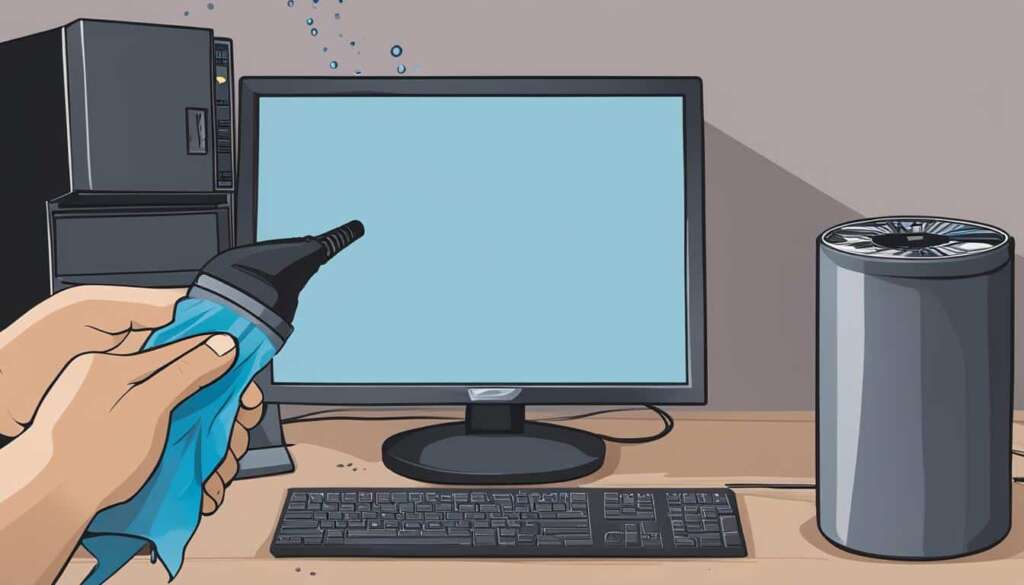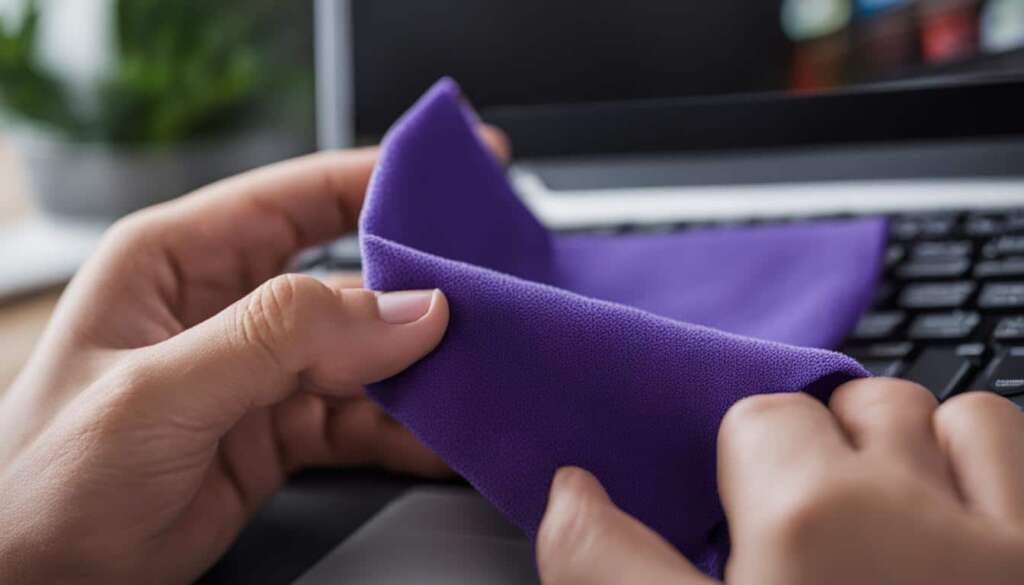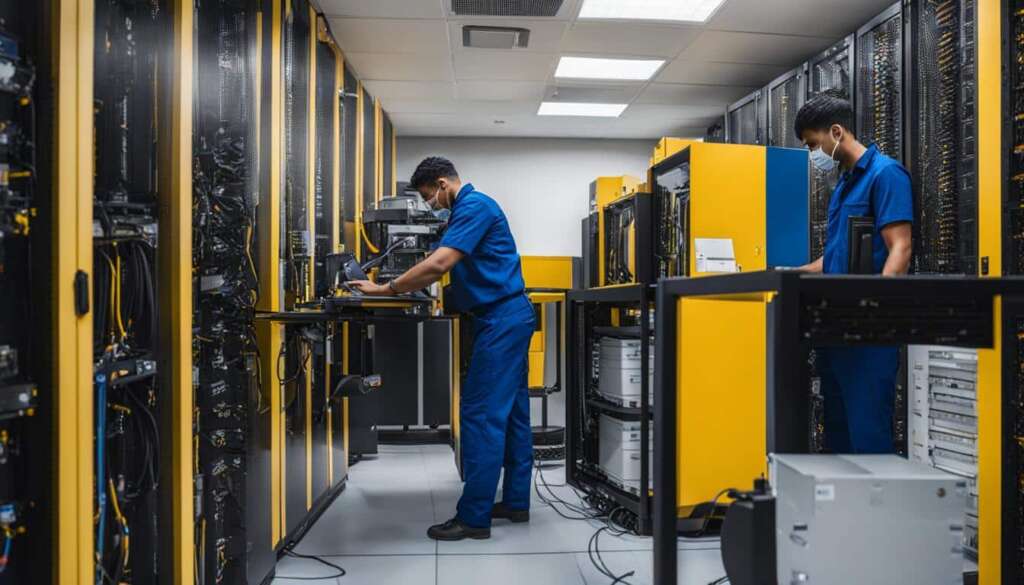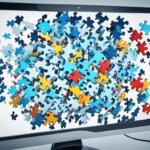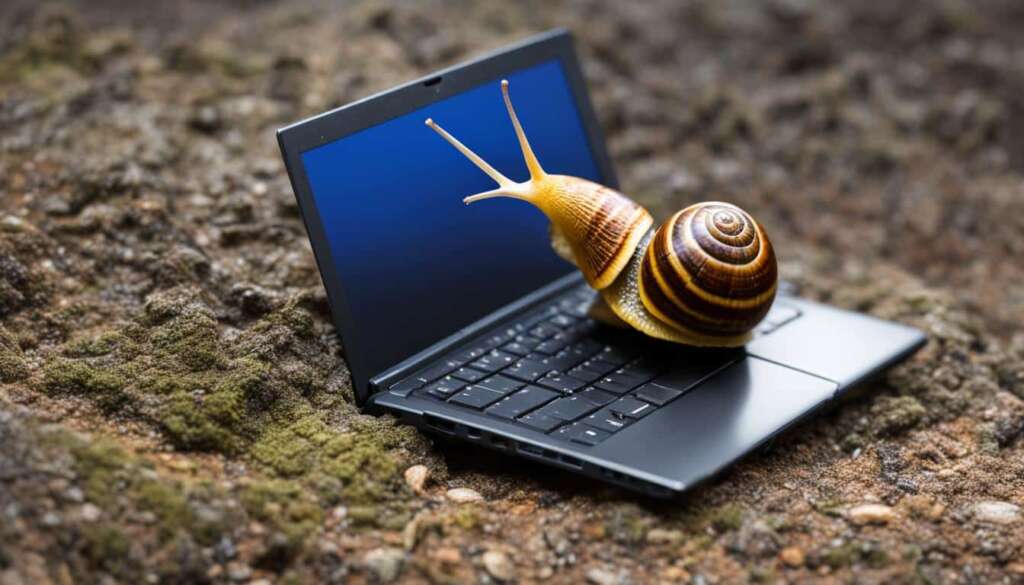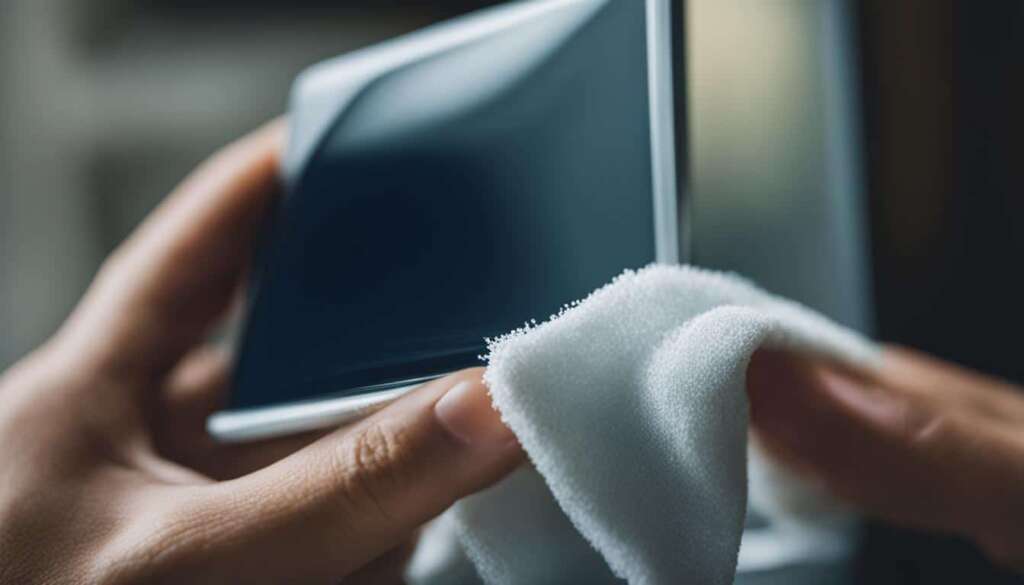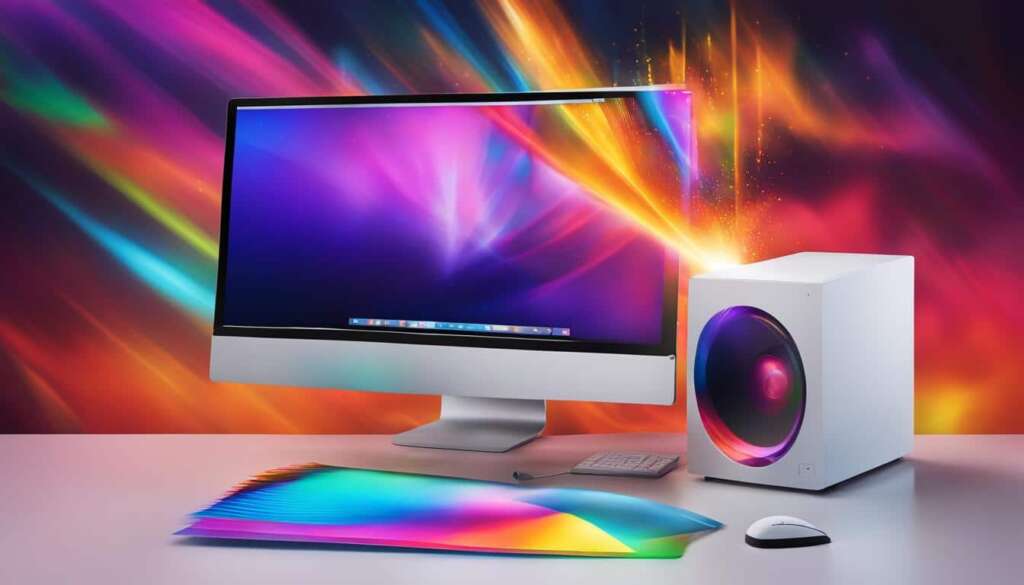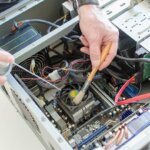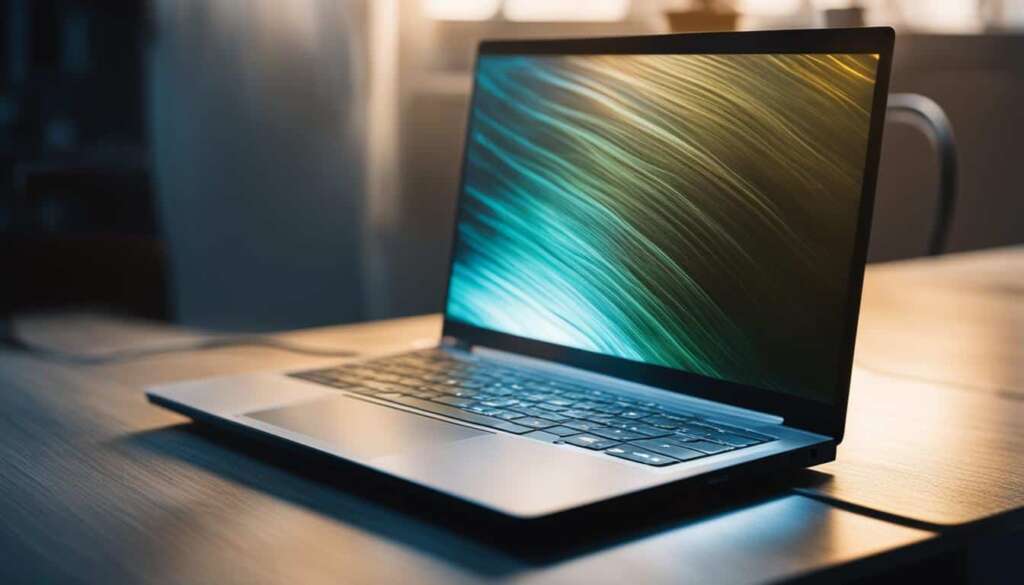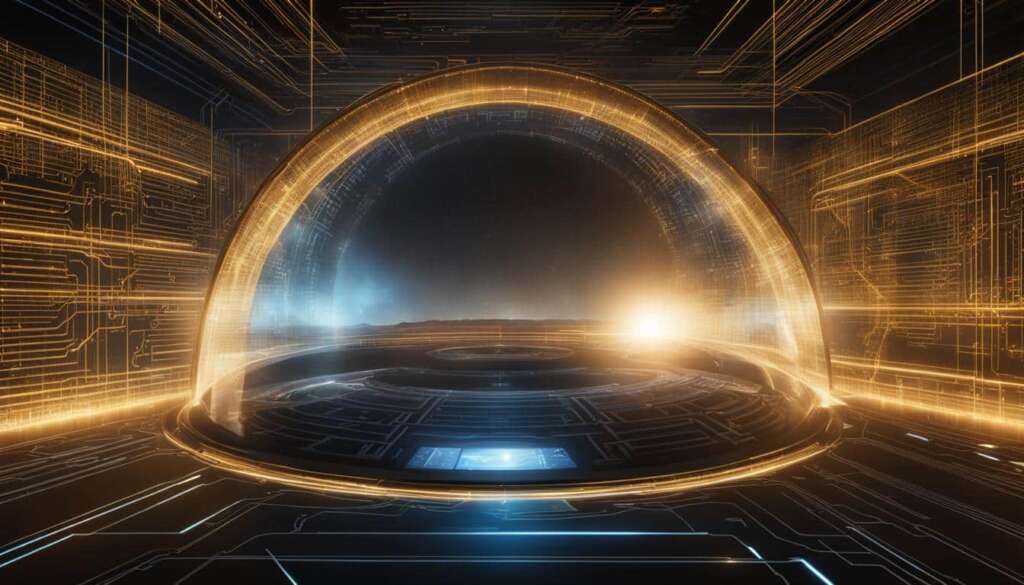Table of Contents
Regularly cleaning and maintaining your PC is crucial for optimal performance, longevity, and efficiency. By following these easy steps, you can ensure that your computer functions smoothly and avoid costly repairs. In this guide, we will walk you through the process of cleaning your PC, starting with keyboard and mouse maintenance, followed by how to clean your monitor and other surfaces, performing a disk cleanup, and finally, deleting unnecessary files and applications.
When it comes to keyboard and mouse cleaning, it’s important to remove any dust, food particles, or liquid that may affect their functionality. We will provide you with tips on how to effectively clean and maintain these essential peripherals.
Dust and dirt on the monitor screen can make it difficult to read and strain your eyes. We will guide you on how to safely clean your monitor and other computer surfaces, ensuring they look their best and provide optimal visual clarity.
Over time, your PC accumulates unnecessary files, which take up valuable storage space and slow down performance. You will learn how to perform a disk cleanup, freeing up space and improving your computer’s speed and efficiency.
Deleting unnecessary files and applications is crucial for maintaining optimal performance. We will show you how to identify and remove unused data, freeing up space on your hard drive and enhancing overall computer optimization.
In conclusion, regularly cleaning and maintaining your PC is essential for its efficiency and longevity. By following these simple steps, you can keep your computer running smoothly, improve its performance, and ensure a hassle-free computing experience.
Cleaning the Keyboard and Mouse
When it comes to cleaning your computer, don’t forget about your keyboard and mouse. Over time, these two essential peripherals can accumulate dust, food particles, and even liquid spills, which can affect their functionality and performance. It’s crucial to give them regular attention to ensure they are clean and in optimal condition. Follow these simple steps to clean your keyboard and mouse effectively.
1. Cleaning the Keyboard
To clean your keyboard, start by turning off your computer and unplugging the keyboard from the USB port. Gently turn the keyboard upside down and shake it to remove any loose debris or particles. Next, use compressed air to blow away any remaining dust from between the keys. For a more thorough cleaning, dampen a microfiber cloth with a mixture of water and gentle soap, wringing it out until it is damp but not wet. Wipe the keys and surfaces of the keyboard, paying extra attention to areas that are visibly dirty or sticky. Finally, let the keyboard dry completely before plugging it back in and turning on your computer.
2. Cleaning the Mouse
When it comes to cleaning your mouse, start by turning off your computer and unplugging the mouse from the USB port. Use a clean microfiber cloth lightly dampened with water or isopropyl alcohol to wipe the surface of the mouse, including the buttons and scroll wheel. Pay special attention to any crevices or areas with visible dirt or grime. For optical mice, check the sensor on the bottom for any debris, and use a cotton swab lightly moistened with isopropyl alcohol to clean it. Once you’ve cleaned the mouse, let it dry completely before plugging it back in and turning on your computer.
| Materials Needed: | Cleaning Steps: |
|---|---|
| – Compressed air | – Turn off computer and unplug keyboard/mouse |
| – Microfiber cloth | – Shake keyboard to remove loose debris |
| – Water | – Use compressed air to blow away dust |
| – Gentle soap | – Dampen cloth with water and soap mixture |
| – Isopropyl alcohol | – Wipe keyboard and keys |
| – Let keyboard dry before reconnecting |
Regularly cleaning your keyboard and mouse not only improves their functionality but also helps prevent the spread of germs and bacteria. By following these simple steps, you can keep your peripherals clean and ensure a smooth computing experience. Remember to clean them at least once a month, or more frequently if you notice any buildup of dirt or debris.
Cleaning the Monitor and Other Surfaces
Dust and dirt can easily accumulate on your computer monitor and other surfaces, affecting both the appearance and functionality of your device. It’s important to regularly clean these areas to ensure optimal performance and longevity. Here are some tips on how to safely clean your monitor and other computer surfaces:
1. Gather the necessary supplies
Before you begin cleaning, gather the necessary supplies. You will need a soft microfiber cloth, isopropyl alcohol or screen-cleaning solution, and distilled water. Avoid using harsh cleaning chemicals or abrasive materials as they can damage your monitor.
2. Turn off your computer and unplug your monitor
Before cleaning, make sure to turn off your computer and unplug your monitor from the power source. This will prevent any potential damage and ensure your safety during the cleaning process.
3. Clean the monitor screen
Start by gently wiping the monitor screen with a dry microfiber cloth to remove any loose dust or debris. Then, dampen the cloth with a small amount of isopropyl alcohol or screen-cleaning solution. Wipe the screen in a circular motion, applying gentle pressure. Avoid spraying any liquids directly onto the screen.
For stubborn smudges or fingerprints, you can dampen the cloth with distilled water instead. Again, make sure not to apply excessive pressure or use abrasive materials that can scratch the screen.
4. Clean the keyboard and other surfaces
Use a can of compressed air to blow away any dust or crumbs from your keyboard. Then, dampen a cloth with isopropyl alcohol and gently wipe the keys and other surfaces of the keyboard. Be careful not to let any liquid seep into the keyboard or other openings.
For other surfaces such as the mouse, desk, or computer casing, simply wipe them down with a damp cloth. Use a dry cloth to remove any excess moisture and ensure everything is completely dry before reconnecting your monitor and turning on your computer.
Regularly cleaning your monitor and other computer surfaces not only improves their appearance but also helps maintain their performance and prolong their lifespan. By following these simple steps, you can keep your computer looking its best and ensure a seamless computing experience.
Performing a Disk Cleanup
Performing a disk cleanup is an essential maintenance task to optimize your computer’s performance and free up valuable storage space. Over time, your computer accumulates unnecessary files that take up disk space and can slow down your system. By removing these files, you can improve the overall speed and efficiency of your PC.
One of the easiest ways to perform a disk cleanup is to use the built-in Disk Cleanup tool in Windows. To access this tool, simply type “Disk Cleanup” in the search bar and click on the “Disk Cleanup” app that appears. Once opened, you can choose which files you want to clean up, such as temporary files, system files, and Recycle Bin items. Click “OK” to start the cleanup process.
During the disk cleanup, the tool will analyze your computer and calculate how much space you can potentially free up. It will present you with a list of files that can be safely deleted. You can review the files and select the ones you want to remove, or you can choose to delete all recommended files. Once you’ve made your selection, click “OK” to proceed with the cleanup.
| File Category | Size | Description |
|---|---|---|
| Temporary Files | 2.5GB | Files created by applications and Windows that are no longer needed. |
| System Files | 1.8GB | Files generated by the operating system, such as update installation files. |
| Recycle Bin | 1.2GB | Deleted files that are still taking up space in the Recycle Bin. |
“Performing regular disk cleanups is crucial for maintaining your computer’s performance. By removing unnecessary files, you can optimize your storage space and prevent your system from becoming sluggish.”
Deleting Unnecessary Files and Applications
When it comes to optimizing your computer’s performance, one crucial step is to delete unnecessary files and applications. Over time, your hard drive can become cluttered with files you no longer need, taking up valuable storage space and slowing down your computer. By regularly cleaning out these unwanted items, you can free up space, improve your computer’s speed, and enhance overall efficiency.
To begin the cleanup process, start by examining your files and determining which ones are no longer necessary. This could include old documents, duplicate files, or unused applications. Sort through your folders and delete anything that you no longer require. Remember, it’s always a good practice to back up important files before deleting them, just in case you need to access them later.
Additionally, uninstalling unused applications can significantly improve your computer’s performance. Many programs run in the background and consume valuable system resources, even when you’re not actively using them. By removing these unnecessary applications, you can free up memory and processing power, leading to a faster and more responsive computer.
Once you have deleted the unwanted files and applications, empty your recycling bin to permanently remove them from your hard drive. This will ensure that they are not taking up any space on your computer. After completing the cleanup process, you should notice an improvement in your computer’s speed and responsiveness, allowing you to work more efficiently and effectively.
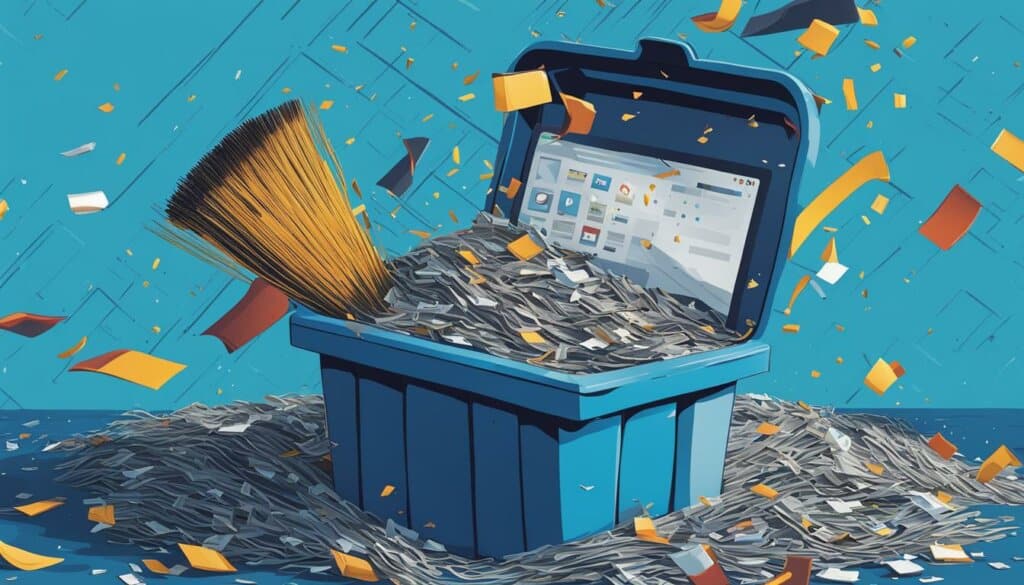
The Benefits of Deleting Unnecessary Files and Applications
Here are some key benefits of regularly deleting unnecessary files and applications:
- Improved performance: By removing unwanted items, you can free up valuable storage space and increase the speed and responsiveness of your computer.
- Enhanced storage capacity: Deleting unnecessary files and applications allows you to make the most out of your hard drive’s storage capacity, giving you more space for important files and programs.
- Reduced clutter: Removing unused files and applications helps to declutter your computer, making it easier to find and organize the files you actually need.
- Reduced security risks: Unwanted files and applications can potentially pose security risks, as they may contain malware or vulnerabilities. Deleting them reduces the chances of a security breach.
| File type | Size (MB) | Number of files |
|---|---|---|
| Documents | 245.3 | 312 |
| Images | 158.2 | 542 |
| Applications | 412.9 | 17 |
| Other | 98.6 | 123 |
| Total | 914.9 | 994 |
Conclusion
Regularly cleaning your PC and performing maintenance tasks is vital to ensure its efficiency and longevity. By following these easy steps, you can keep your computer running smoothly and improve its overall performance.
To start, make sure to clean your keyboard and mouse regularly. Removing dust, food particles, and liquid spills will help maintain their functionality and prevent any issues that may arise from buildup.
In addition, it’s important to clean your monitor and other surfaces to keep them looking their best. Dust and dirt can accumulate on the screen, making it difficult to read. By learning how to safely clean these surfaces, you can enhance your viewing experience.
Furthermore, performing a disk cleanup is essential to free up storage space and optimize your PC’s performance. Over time, unnecessary files accumulate, slowing down your computer. By following a few simple steps, you can remove these files and improve your system’s efficiency.
Lastly, deleting unnecessary files and applications is crucial. By removing unused data, you can free up valuable space on your hard drive and ensure optimal performance. Learn how to perform this task correctly to maintain a clutter-free computer.
Remember, regular PC maintenance is key to keeping your computer running smoothly. By incorporating these cleaning and optimization practices into your routine, you can enjoy a more efficient and reliable machine.
FAQ
Why is it important to clean my computer regularly?
Cleaning your computer regularly is essential to keep it working properly and avoid costly repairs. Dust, food particles, and liquid can accumulate on the keyboard and mouse, affecting their functionality. Dust and dirt on the monitor screen can make it difficult to read. Additionally, over time, your computer accumulates unnecessary files that take up storage space and slow down performance. Removing unused files and applications is crucial to maintain optimal performance.
How can I clean my keyboard and mouse?
To clean your keyboard and mouse, you can start by turning off your computer and unplugging the keyboard and mouse. Use a can of compressed air or a small brush to remove any dust or debris from the keys and crevices. Wipe the surface with a damp cloth or a disinfectant wipe to clean the dirt and food particles. For the mouse, use a soft cloth or cotton swab to clean the exterior and the sensor. Be careful not to use excessive moisture or liquid.
How should I clean my monitor and other computer surfaces?
To clean your monitor and other computer surfaces, start by turning off the monitor and unplugging it. Use a microfiber cloth or a screen cleaning solution to gently wipe the screen in a circular motion. Avoid using paper towels or rough materials that can scratch the surface. For other surfaces, use a soft cloth or a disinfectant wipe to remove dust and fingerprints. Avoid spraying liquids directly onto the screen or surfaces.
How can I perform a disk cleanup?
To perform a disk cleanup, you can start by accessing the Disk Cleanup tool on your computer. This tool can be found by searching for “Disk Cleanup” in the Start menu. Once opened, select the drive you want to clean and click “OK.” The tool will scan your drive and present you with a list of files that can be deleted. Review the list and select the files you want to delete. Click “OK” to proceed with the cleanup.
How do I delete unnecessary files and applications?
To delete unnecessary files and applications, you can start by going to the Control Panel on your computer. From there, click on “Programs” and then “Uninstall a Program.” A list of installed applications will appear, allowing you to select the ones you want to remove. Additionally, you can use the File Explorer to navigate to folders where unnecessary files are stored, select them, and delete them. Be cautious when deleting files and applications to avoid removing anything important.

